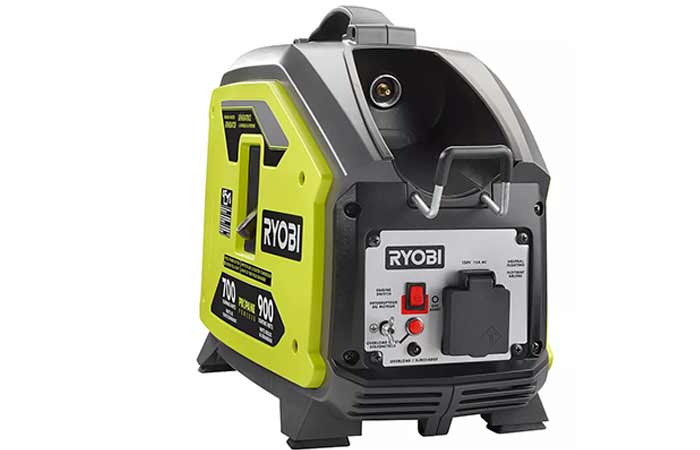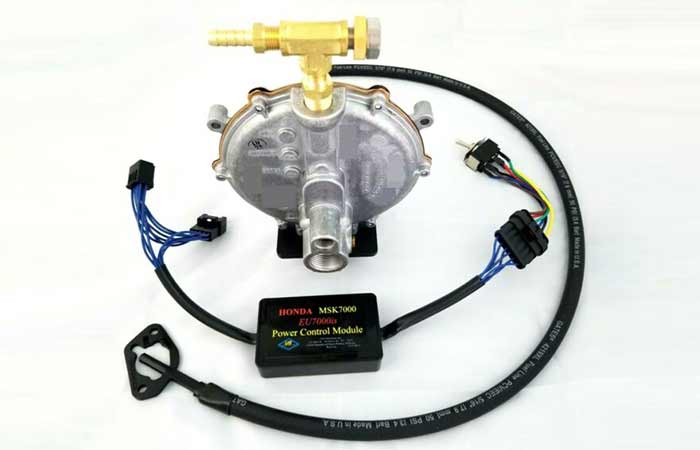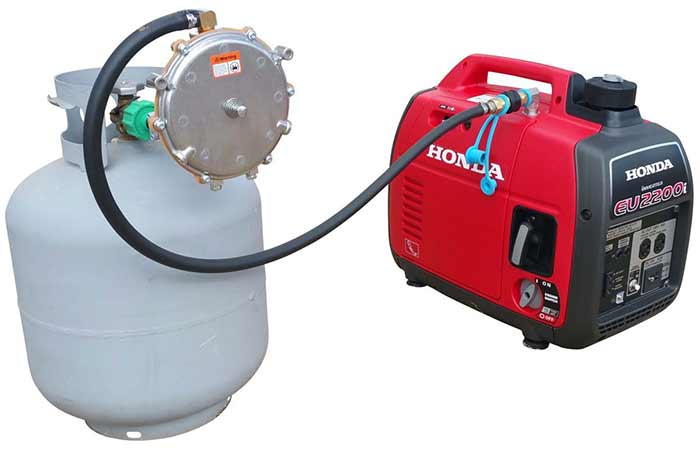A generator works great when you have fuel and everything is running well. However, you could easily run out of fuel in a storm and can’t run your appliances. If it’s a critical piece of equipment, you may just incur a big loss or worse. Luckily, there is a workaround for that which is using a conversion kit to use many fuels on a single generator.
A propane generator can run on natural gas but only with a conversion kit. If you try to simply change the fuel without a conversion kit, you run the risk of destroying the engine and other related parts. There are many different conversion kits meant to allow you run different types of fuels on the generator. In fact, you can run more than one other type of fuel on your generator with some kits enabling you run natural gas and gasoline on a propane generator and vice versa.

How to Convert a Generator to Run Other Fuels
In this guide, we will focus on enabling your generator to run other fuels beyond its primary fuel. If you have a gasoline generator, for example, the guide below is meant to enable your generator run natural gas or propane or both. Basically, you’ll be converting your generator from a single-fuel one to a dual fuel or tri-fuel generator.
What You Need (Supplies)
The items needed for this exercise include the following:
- On demand regulator
- Carburetor gasket
- Carburetor adapter
- Mounting bolts
- Stud extensions
- Yellow thread sealer or Teflon tape
- Fittings for use between the adapter and on demand regulator
- Hose for use between the adapter and the on demand regulator
All of these items are vital to the working of your generator with another fuel. There are cases of people skipping the on demand regulator thinking it’s not important. Doing so only adds unnecessary risk to the whole process.
The role of this regulator is to shut off the supply of fuel when the engine comes to a stop. This is safe since fuel flowing when the engine is off can easily lead to a fire. The fuel could easily flow to hot parts of the generator leading to a fire and other risks. The workings of an on demand regulator are that it only allows fuel to flow to the generator when the engine sucks the fuel and air mixture. Without the suction mechanism from the engine, the fuel wont be allowed to flow.
For this exercise, we’re focused on making a gasoline generator dual fuel. This means that, at the end of the exercise, it should be able to run two fuels and not just gasoline.
The Steps
1. Remove the Air Filter
The first step is removing the air filter from the generator. You do this by first removing the air filter cover then removing the air filter itself.
2. Remove the Filter Housing
After that, remove the nuts and bolts on the air filter housing to the carburetor then remove any levers and breather tubes in the air filter housing. Do not throw away anything as they’ll need to be put back afterwards.
3. Install the Gasket and Stud Extenders
Using a pair of pliers, grip the smooth area on the stud extenders between the carb and the threads then screw the stud extenders to the generator. You follow this up by installing the gasket you found in the kit above.
4. Install the Fuel Adapter and the Air Cleaner Housing
Next up is installing the fuel adapter. To install this part, check the orientation of the airflow of the carburetor adapter. You then dry fit the elbow to determine the direction it ought to point towards. After that, remove the elbow then cover the threads with a reasonable amount of Teflon tape or the thread sealer.
You should only use yellow Teflon tape as it’s the only one suitable for use with propane. Also, keep the Teflon tape just before the last thread as going beyond this point risks blocking the flow of gas when a piece of the tape breaks off and enters the airflow.
Carefully slide the carburetor adapter onto the stud extensions then reinstall the air cleaner housing. Make sure the gasket is between the carburetor adaptor and the housing.
Install the air cleaner after this then finish up by clamping the fuel hose on to the elbow. If you had removed the choke lever or any other levers, reattach them.
5. Start the Engine and Load the Set
While still on gasoline, start the generator then let it run until the temperature rises to the operating level. When the temperature is attained, turn the fuel valve petcock to OFF then let the engine run until all the fuel in the carburetor and the gas line is used up. Turn off the engine after this.
Turn the set screw all the way in then turn the propane gas tank on. After that, press the prime button in for about 1 second. Youll find the prime button on the back of the demand regulator.
Restart the engine then adjust the screw to get the right amount of fuel you want. Turning it in allows in less fuel while out allows more fuel to flow. Lock it in place with the set nut when you have the right mixture.

Changing Back to Gasoline
When you want to switch it back to gasoline, go through the steps below:
- Turn off the engine.
- Turn off the propane tank.
- Turn on the gasoline petcock valve.
- Replace the propane line which is attached to the on demand valve with the cap.
- Turn off the ball valve.
- Start the engine.
These steps will help you use two types of fuel with your generator without damaging it. Again, it’s a risky set of steps which require good knowledge of the workings of the fuel system to pull it off. If you don’t know what you’re doing, call in an expert. Beware though; adding a conversion kit may void the warranty of your generator.
